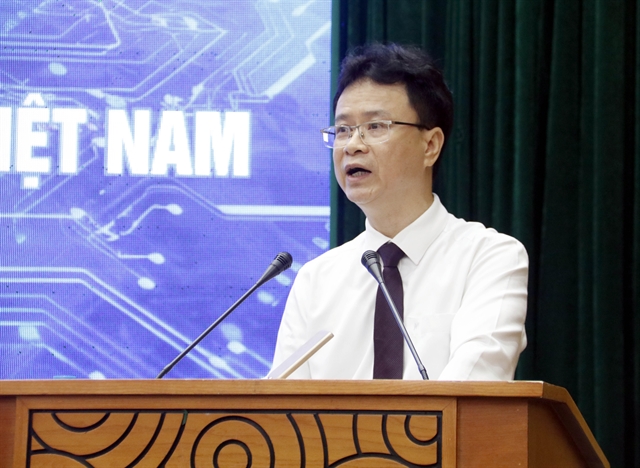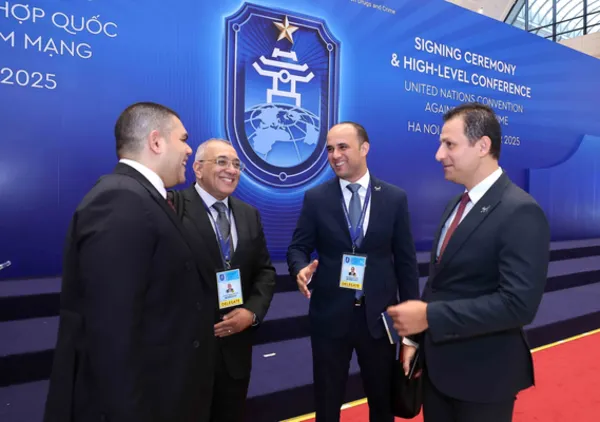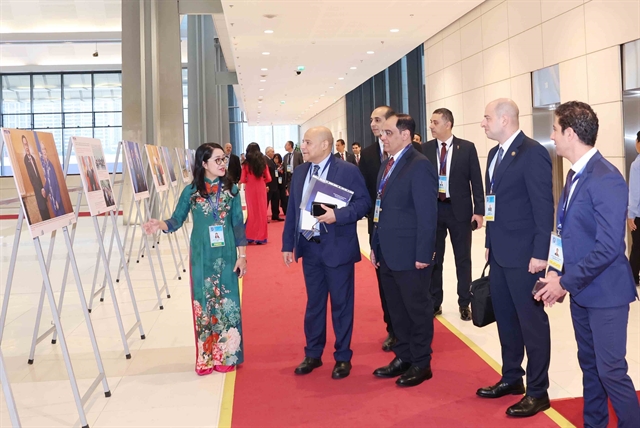 Economy
Economy

|
|
| An overview of the seminar. — VNS Photo |
BẮC GIANG — The Institute of World Economics and Politics, in collaboration with the Bắc Giang Union of Science and Technology Associations, held a seminar in Bắc Giang City titled "The Semiconductor Industry Ecosystem and the Role of Localities and Vietnamese Enterprises".
Dr Ngô Chí Vinh, Chairman of the Bắc Giang Union of Science and Technology Associations, said in his opening remarks that according to the US-based Semiconductor Industry Association (SIA), nearly US$1 trillion is expected to be invested in the semiconductor sector by 2030. This makes the semiconductor industry one of the fastest-growing sectors globally.
Recently, many developed countries have extensively collaborated with Việt Nam in the semiconductor industry. According to Vinh, Bắc Giang is becoming an attractive destination for both domestic and international investors.
The province currently has nine industrial zones covering nearly 2,400 hectares. It has attracted several semiconductor companies such as Hana Micron Vina, Si Flex Vietnam (South Korea), and Synergie Cad Vietnam (France).
However, embracing the semiconductor ecosystem poses significant challenges for the country and localities, Vinh said.
He pointed out demands for advanced infrastructure, including a stable power supply, modern industrial waste treatment systems, and upgraded transportation and logistics. Additionally, a shortage of skilled labour, inadequate industry management practices and limited technology transfer capabilities are among biggest obstacles.

|
| Dr. Ngô Chí Vinh, Chairman of the Bắc Giang Union of Science and Technology Associations, speaks at the seminar. — VNS Photo |
During the seminar, participants discussed the implementation of investment attraction policies, the demand and capacity for training the workforce for the semiconductor industry, and international and local experiences in fostering the semiconductor ecosystem. They also analysed Việt Nam's and local businesses' strengths, weaknesses, opportunities and challenges in joining the semiconductor industry ecosystem.
Vũ Văn Cường, Deputy Director of the Bắc Giang Department of Planning and Investment, said that Bắc Giang has recognised the importance of the semiconductor industry early on, especially given the power of semiconductor chips and AI technology. The province has focused on creating optimal conditions to attract semiconductor investors. Infrastructure has been upgraded across industrial zones and local industrial clusters, including transportation, utilities, and support services.
Currently, there are three semiconductor production companies in Bắc Giang, which not only boost the local economy but also create over 8,000 jobs and attract many high-skilled professionals. Despite these gains, the semiconductor industry remains relatively new in the province, Cường said. He urged Bắc Giang needs to continue its efforts to maintain its position, develop existing potential, and enhance investment attraction in the semiconductor sector.
Nguyễn Mạnh Chiến, Human Resources Manager at Hana Micron Vina, said that a significant challenge for companies starting operations there is the scarcity of semiconductor talent. Besides developing core talent, there needs to be an industrial ecosystem for component and material suppliers. He suggested that localities should offer specific incentives to attract semiconductor investments.
According to Đặng Đức Anh from the Central Institute for Economic Management, though Bắc Giang has opportunities and strengths, it also faces weaknesses such as a weak support ecosystem, particularly in soft infrastructure, limited high-quality human resources, and high land rental costs.
To further boost semiconductor industry investment, the delegates recommended that Bắc Giang continue to implement strategic investment attraction policies, particularly for foreign investment, enhance research and development activities, and build a cohesive industrial ecosystem with high-quality human resources.
The focus should on developing specialised industrial zones with strong international competitiveness and foster partnerships with training institutions and international semiconductor giants such as the US, Japan, and Korea to attract FDI and collaborate on training. — VNS




